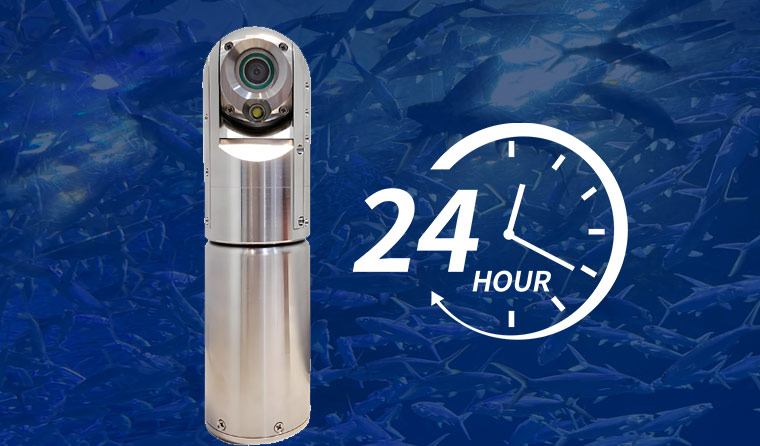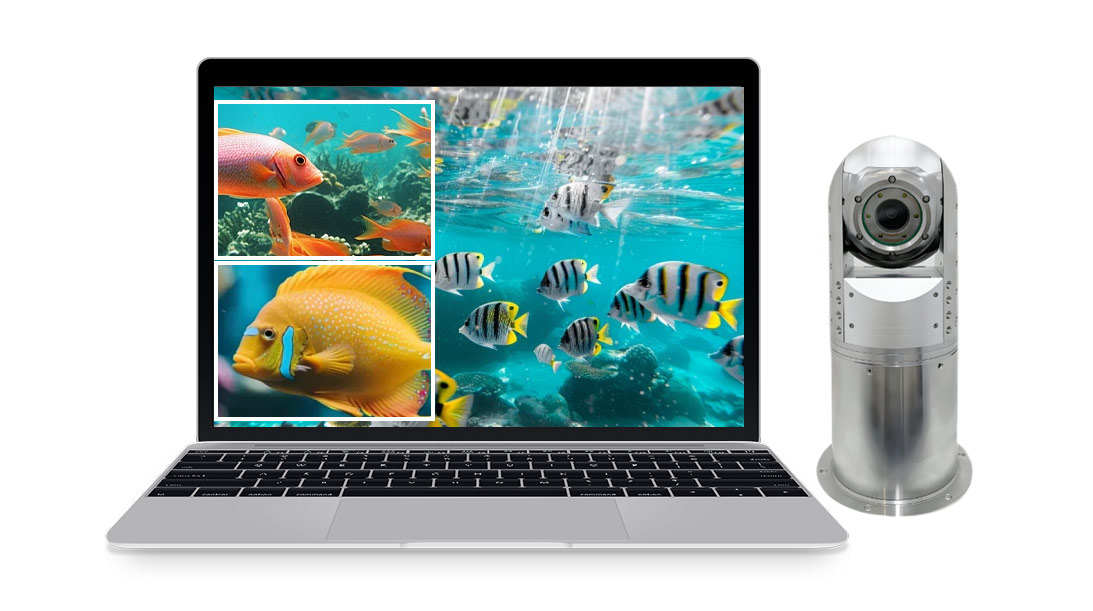
The 24-hour monitoring function of underwater aquaculture cameras is not just about "real-time viewing"; it can further realize "proactive management" through data linkage, providing data support for aquaculture decision-making. Common application scenarios include:
1. Biological State Monitoring: Precisely Managing Growth Rhythms
Through 24-hour image analysis, aquaculture farmers can observe the feeding status of cultured organisms in real time — if a sudden decrease in daytime feeding is detected, it may be a sign of water quality deterioration or disease; if a large number of organisms gather near aerators at night, it may indicate insufficient dissolved oxygen in the water, requiring timely adjustment of aeration equipment. At the same time, by regularly capturing images (e.g., at the same time every week) and comparing changes in the size of organisms, farmers can accurately determine the growth rate, adjust the feeding amount and feed formula, and avoid waste or nutritional deficiencies.

2. Risk Early Warning: Reducing Sudden Losses
24-hour monitoring enables "automatic alarm for abnormal situations": When the camera detects a sudden decrease in water transparency (e.g., mass death of algae), abnormal behaviors of cultured organisms such as "floating at the water surface" (a phenomenon where aquatic organisms rise to the water surface to breathe due to insufficient oxygen, referred to as "futou" in Chinese aquaculture) or "frantic swimming", or the shutdown of equipment (e.g., feeders, aerators), the system can send real-time alarms via SMS or APP notifications. Even if farmers are not on-site, they can handle the issue remotely as soon as possible, minimizing losses. For example, a prawn farm once detected that prawns were "gathering at the pond edge" (a precursor to disease, referred to as "pabian" in Chinese aquaculture) at night through 24-hour monitoring, and promptly administered chemicals, avoiding the death of the entire pond of prawns and reducing losses by over 100,000 yuan (approximately $14,000, based on an exchange rate of 1 USD ≈ 7 CNY).
3. Aquaculture Traceability: Enhancing Product Quality and Credibility
Currently, consumers’ demand for "traceability" of aquatic products is increasing. The images recorded by 24-hour monitoring can serve as an important basis for "aquaculture process traceability": By storing monitoring videos of key time nodes (e.g., feeding, water quality testing, disease prevention and control), farmers can prove the standardization of the aquaculture process to the market (e.g., no illegal use of drugs, reasonable feeding), thereby increasing the product’s premium space. Some high-end aquatic product enterprises also open real-time monitoring images to consumers through official websites and live broadcast rooms, creating a "transparent aquaculture" brand image and enhancing consumer trust.
For more information about underwater aquaculture camera, please visit the homepage.

